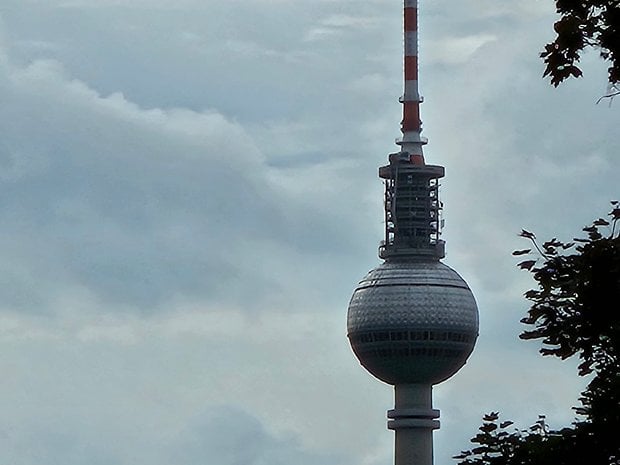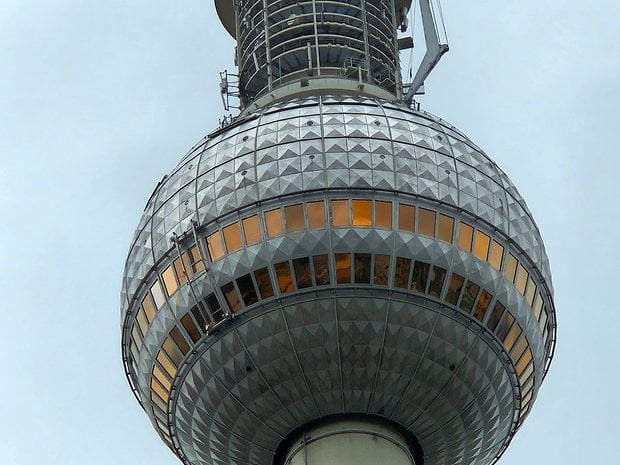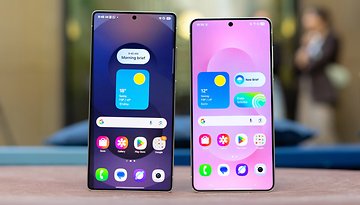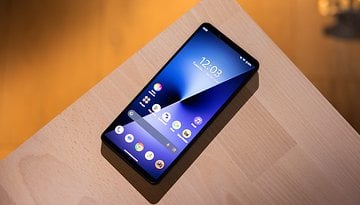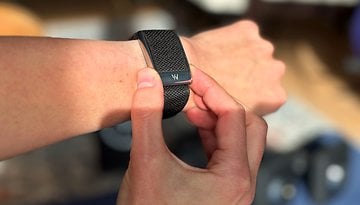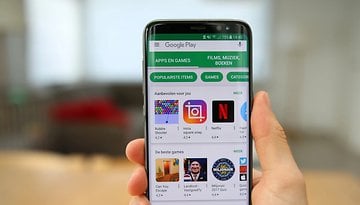Samsung Galaxy Z Fold 5 vs Fold 4: Don't buy the new model


We've tested Samsung's new range of foldable smartphones. In this comparison, we tell you how the Samsung Galaxy Z Fold 5 stacks up against its predecessor, the Galaxy Z Fold 4. Are the new features enough to justify buying the new model? What are the differences between the Galaxy Z Fold 5 and the Galaxy Z Fold 4? Is Samsung's old foldable smartphone still competitive in 2023? We tell you all!
Samsung Galaxy Z Fold 5 vs. Galaxy Z Fold 4: Specs compared
| Spot the differences | ||
|---|---|---|
| Product | ||
| Picture |

|

|
| Internal display | 7.6" OLED 2176 x 1812 pixels 1~120 Hz |
|
| External display | 6.2'' OLED 2316 x 904 pixels 48~120 Hz |
|
| SoC | Snapdragon 8 Gen 2 | Snapdragon 8+ Gen 1 |
| RAM | 12 GB | |
| Storage | 256 / 512 / 1024 GB | |
| Expandable memory? | ❌ | |
| OS | Android 13 | Android 12 |
| Four Android upgrades Five years of security updates |
||
| Camera | Main: 50 MP, f/1.8, OIS Ultra-wide: 12 MP, f/2.2 3x telephoto: 10 MP, f/2.4 |
|
| Selfie | Internal: 4 MP, f/1.8 Cover: 10 MP, f/2.2 |
|
| Battery | 4,400 mAh 25 W wired charging 10 W wireless charging |
|
| Connectivity | 5G / LTE / Wi-Fi 6E / Wi-Fi Direct / Bluetooth 5.3 / NFC / UWB | 5G / LTE / Wi-Fi 6E / Wi-Fi Direct / Bluetooth 5.2 / NFC / UWB |
| eSIM | ✅ | |
| IP Certification | IPX8 | |
| Dimensions and weight | Folded: 154.9 x 67.1 x 13.4 mm Unfolded: 154.9 x 129.9 x 6.1 mm 253 g |
Folded: 155,1 x 67,1 x 15.8 mm Unfolded: 155,1 x 130,1 x 6.3 mm 263 g |
| Rating |
|
|
| Offers* | ||
The two smartphones are, unsurprisingly, extremely similar. The only differences are the performance gains on the Galaxy Z Fold 5 thanks to the Snapdragon 8 Gen 2 SoC, and the improved hinge that allows the Fold 5 to fold completely flat. That's it, that's it. Other than that, the Galaxy Z Fold 5 is a carbon copy of its predecessor, the Galaxy Z Fold 4.
Display and design

The Samsung Galaxy Z Fold 5 and Galaxy Z Fold 4 are virtually identical in terms of design and screen quality. The Galaxy Z Fold 5 is slightly thinner (2.4 mm thinner, to be precise) and a little lighter (10 g lighter, to be precise).
The rear of the Galaxy Z Fold 5 features Gorilla Glass Victus 2, a more resistant protection than the Gorilla Glass Victus+ on the Galaxy Z Fold 4. The ultra-thin glass (UTG) inner screen is still protected only by a thin layer of plastic on both models. Like its predecessor, the Galaxy Z Fold 5 is IPX8-certified for water and dust resistance.

The only major difference lies in the hinge. Samsung has adopted a "teardrop" mechanism for the Galaxy Z Fold 5, enabling it to fold completely flat, with no gap between the two screen flaps. This is an advantage both in terms of compactness and sturdiness.
As for the screen, the internal and cover screens of the Galaxy Z Fold 5 have the same diagonal as those of the Z Fold 4, at 7.6 and 6.2 inches respectively.

One of the visible changes compared to the Galaxy Z Fold 4 is in maximum brightness, which reaches an impressive 1750 nits.
The two internal panels on each model offer a variable refresh rate from 1 to 120 Hz. Above all, the crease in the middle of the screen remains visible and perceptible on both models.

Performance and connectivity
Performance-wise, both phones are deservedly flagship devices—if the price wasn't enough indication of that. The main difference in this section is that the Galaxy Z Fold 5 uses a newer generation high-end processor, the Snapdragon 8 Gen 2.
It logically offers better performance than the Snapdragon 8+ Gen 1 of the Galaxy Z Fold 4, but the difference in concrete use is not really perceptible. All the more so as the Galaxy Z Fold 5, like the Galaxy Z Fold 4, tends to restrict its performance to avoid overheating. This is particularly the case when using the smartphone in folded mode, as it then has less surface area to dissipate heat.

Both models use high-speed memory standards, LPRDR5 for RAM, and UFS for storage—UFS 4.0 on the Fold 5 and UFS 3.1 on the Fold 4, which should ensure top-notch performance while saving files and opening apps.
On the connectivity front, more unexciting news: The only upgrade is the rather minor jump from Bluetooth 5.2 to Bluetooth 5.3.
| Samsung Galaxy Z Fold 5 (Snapdragon 8 Gen 2) |
Galaxy Z Fold 4 (Snapdragon 8+ Gen 1) |
||
|---|---|---|---|
| 3DMark Wild Life |
|
|
|
| 3DMark Wild Life Stress Test |
|
|
|
| Geekbench |
|
|
|
Cameras
Well, I think you get the idea by now. When it comes to photography, it's also innovation at its worst. The same 50 MP main lens, the same 12 MP ultra-wide angle lens and the same 10 MP x3 telephoto zoom lens. Strictly speaking, nothing has changed compared with the Galaxy Z Fold 4. Even the sensors are the same.

Daytime photo quality is generally good with the main lens. The telephoto lens produces a very good x3 zoom in terms of detail, and a fully usable x10 zoom.
The ultra-wide angle still lags behind the other lenses. There are still color consistency issues with the main lens and disappointing low-light quality.

At night, apart from the ultra-wide angle, the Galaxy Z Fold 5 does very well, just like the Galaxy Z Fold 4 before it. And we still appreciate the number of selfie-taking possibilities offered by both models.
All in all, you have three photo modules for your self-portraits. But the best choice is the main lens on the back. The selfie camera on the cover screen is decent. The selfie camera under the inner screen is anecdotal. Here too, nothing has changed between the Galaxy Z Fold 5 and the Fold 4.

Galaxy Z Fold 5 camera test
Galaxy Z Fold 4 camera test
Software

The Galaxy Z Fold 5 was launched with Android 13 and its predecessor with Android 12. Samsung promises the same level of software support for both: 4 years of Android updates and 5 years of security updates.
Among the Galaxy Z Fold 5's new software features is a multitouch drag-and-drop function similar to that available on iPhones. This lets you drag and drop a file between two applications with two fingers, without having to close either app.

Samsung has also enhanced features already available on the Galaxy Z Fold 4. These include the taskbar introduced with One UI 4.1. It can now display three or four of the most recently used applications on One UI 5, instead of just two.
What's more, you'll be able to hide context-sensitive applications without losing attention, for example for a voice chat during a shared video streaming session.

The multi-window feature has also been slightly improved. You can open a floating window in split-screen mode and hide floating windows on the sides of the screen with a swipe gesture.
Battery and Charging

Suspense, the autonomy and recharging part are strictly the same on the Galaxy Z Fold 5 and the Galaxy Z Fold 4. Yes, that's a lot, we agree.
- 4,400 mAh capacity.
- 25 W maximum charging power.
- 10 W wireless Qi charging.
- Reverse wireless charging (Wireless PowerShare).
The Galaxy Z Fold 5's autonomy with the screen unfolded approaches 10h30, while it exceeds 17h with the cover screen. This is a very respectable score. Unfortunately, we didn't use an autonomy benchmark for our test of the Galaxy Z Fold 4. So we can't make a concrete comparison.
But with either model, you can get through a whole day without any problems if you have mixed usage (smartphone folded and unfolded). If you use the unfolded screen constantly, autonomy will logically be less, since the large internal screen is much more energy-intensive than the cover screen.

Charging is just as slow on the Galaxy Z Fold 5 as on its predecessor. Allow almost 1h45 for a full charge. The charger is not included in the box, but that hasn't changed either.
Price and availability
No surprises when it comes to pricing for the Fold 5, the new foldable's manufacturer-suggested retail price (MSRP) is exactly the same as Samsung suggested for the Fold 4 in 2022, at least in the US. Almost one year later, however, Samsung reduced the Fold 4 official price slightly, as specified in the table below:
| MSRP | Galaxy Z Fold 5 | Galaxy Z Fold 4 |
|---|---|---|
| 256 GB | $1,799 | |
| 512 GB | $1,919 | |
| 1 TB | $2,159 |
Conclusion

In our test of the Galaxy Z Fold 4 last year, Samsung's foldable smartphone scored 4.5/5. The almost identical Galaxy Z Fold 5 scored "only" 4/5. Admittedly, Samsung's two foldables are virtually identical. And the Galaxy Z Fold 5 brings some incremental improvements in terms of performance and design.
But it would be dishonest not to sanction Samsung's stagnation from generation to generation. In our opinion, the Galaxy Z Fold 5 does not justify its price increase over the Galaxy Z Fold 4.
Above all, given the lack of new features in the Galaxy Z Fold 5, the old model is still very competitive in 2023. So if you're looking to buy a Samsung foldable smartphone this year, we'd recommend the Galaxy Z Fold 4 over the new model.
What do you think of the Galaxy Z Fold 5? Do you already use a foldable smartphone? Which one?





